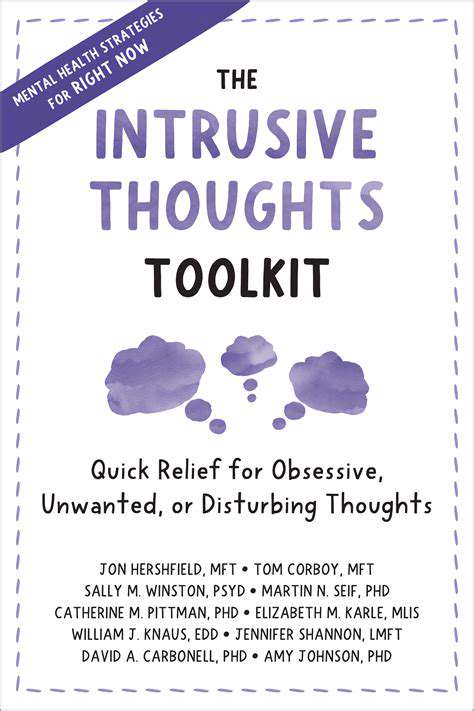Recognizing OCD Behaviors: A Comprehensive Guide

Recognizing the Pattern
Obsessive thinking follows predictable patterns that become recognizable with awareness. These mental intrusions typically cluster around themes of harm, contamination, or moral failings. What makes them particularly distressing is their repetitive nature and resistance to logical counterarguments. The mind gets stuck like a needle on a scratched record, replaying the same troubling thoughts despite conscious efforts to stop them.
The Impact on Daily Life
When obsessive thoughts dominate mental space, they crowd out everything else. Concentration suffers as cognitive resources get diverted to managing anxiety. I've seen talented professionals whose careers stalled because they couldn't focus during meetings, and parents who struggled to be present with their children due to constant mental distractions.
The emotional toll manifests in irritability, exhaustion, and sometimes depression as individuals grow weary of their own thought patterns. Relationships strain when loved ones don't understand why simple decisions become agonizing or why certain topics trigger disproportionate reactions.
Distinguishing from Normal Worry
Healthy concern adapts to circumstances, while obsessive thinking remains rigid. Most people can evaluate a worry's validity and move on, but OCD traps individuals in endless what if scenarios. The thoughts often feel alien, as if they don't belong to the person experiencing them, yet they provoke very real distress.
A key difference lies in the emotional response - where normal worry might cause mild discomfort, obsessive thoughts trigger intense anxiety that demands immediate action to alleviate.
The Role of Anxiety
Anxiety acts as both cause and effect in obsessive thinking. The brain misinterprets thoughts as threats, triggering fight-or-flight responses. This creates a feedback loop where the physical symptoms of anxiety (racing heart, sweating) become proof that the thoughts must be important. Breaking this cycle requires retraining the brain's threat detection system through therapeutic techniques.
Identifying Triggers and Themes
Common triggers include stress, fatigue, and specific environmental cues. A person with contamination fears might react strongly to public restrooms, while someone with harm obsessions could be triggered by kitchen knives. Journaling can help identify these patterns, creating opportunities to intervene before the spiral intensifies.
Seeking Professional Help
Specialized therapists use evidence-based approaches to help clients regain mental freedom. ERP gradually exposes individuals to feared thoughts while preventing compulsive responses. With practice, the brain learns that thoughts alone aren't dangerous and that anxiety will diminish naturally without rituals.
Coping Strategies and Self-Care
While professional treatment is essential, daily practices can support recovery. Mindfulness teaches observation of thoughts without reaction. Physical exercise helps regulate the nervous system. Perhaps most importantly, learning self-compassion counteracts the shame that often accompanies these conditions.
Distinguishing OCD from Normal Habits: Key Differences

Understanding Obsessive-Compulsive Disorder
OCD transforms ordinary behaviors into exhausting rituals governed by fear. Where healthy habits serve practical purposes, compulsions aim to prevent imagined catastrophes. The distinction becomes clear when examining motivation - checking a locked door once provides security; checking it twenty times reflects distress. True compulsions feel obligatory rather than optional, with failure to perform them causing overwhelming anxiety.
Common Obsessions in OCD
The content of obsessions often reveals underlying fears. Contamination worries might mask deeper concerns about illness vulnerability. Perfectionistic tendencies could reflect fear of criticism. These themes remain remarkably consistent across cultures, suggesting biological underpinnings in how the brain processes threat.
Common Compulsions in OCD
Compulsions range from observable behaviors to mental rituals. While handwashing gets more attention, less visible compulsions like mental reviewing or prayer rituals can be equally debilitating. Some individuals develop elaborate rules governing how they must perform routine actions to feel just right.
Distinguishing OCD from Normal Habits
Three key markers differentiate clinical OCD: time consumption (more than an hour daily), significant distress, and functional impairment. When habits dictate life rather than serve it, crossing from preference to pathology, professional evaluation becomes necessary.
The Impact of OCD on Daily Life
The cumulative effect of OCD symptoms creates what researchers call secondary disabilities. Career advancement stalls due to lateness or distraction. Social circles shrink as invitations get declined. Many describe feeling like spectators in their own lives, watching opportunities pass while trapped in ritualistic loops.
Seeking Professional Help
Effective treatment requires specialists familiar with OCD's nuances. General therapists might misinterpret symptoms, while OCD specialists recognize subtle manifestations. The good news? With proper treatment, most individuals achieve meaningful symptom reduction and quality-of-life improvements.